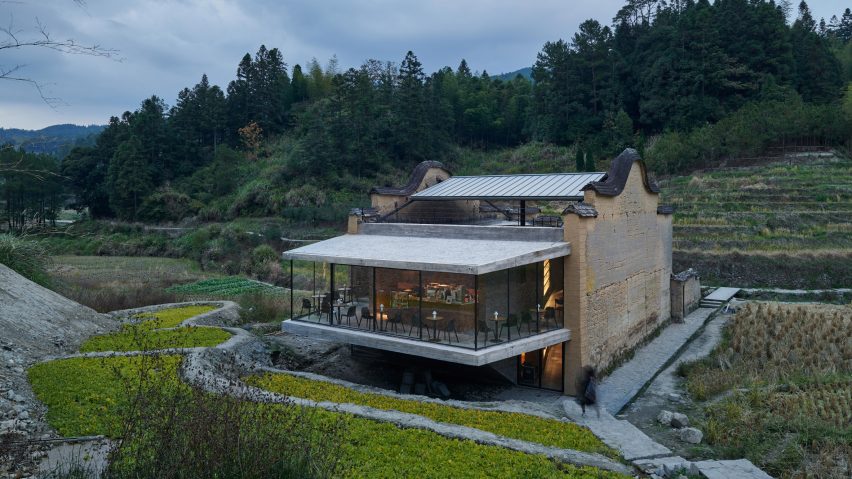Trace Architecture Office has inserted a bookshop and cafe into old rammed earth gables of a long-abandoned house in rural China.
Called Paddy Field Bookstore after its location, the shop on the outskirts of Xiadi Village, Fuijian province, is all but invisible from the exterior.
"The remnants serve as a container that wraps around the new construction, which is made of concrete and steel, forming a dialogue between the contemporary and the traditional," said the practice.
"Most of the new construction is hidden inside the remnants of the old house, so it seems as though nothing happened from the outside."
A cantilevering cafe space projecting from the building is the only outward sign of its transformation.
The floor-to-ceiling glazing provides views across the paddy fields back towards the village.
The shop will be operated by Librairie Avant-Garde, an independent book shop launched in 1996 in Nanjing that has since expanded across China.
Angled concrete walls in the centre of the old building form the core of the new structure.
The three-storey Paddy Field Bookstore includes a ground floor display area, a first floor reading room and a rooftop viewing terrace.
Around the plan's edge, these concrete walls face the untreated walls of the original structure.
In the centre, they enclose a more insular theatre space.
Here, stepped wooden seating areas for impromptu performances double as shelving.
Supported by these central walls, Paddy Field Bookstore's two concrete floorplates are cut back in areas to create thin gaps between the old and new structures.
These gaps are glazed and act as skylights.
To the west, the new building breaks out of the original footprint to extend into the cantilevering glazed cafe space.
The pitched roof has been designed with an umbrella-like structure.
It's held up by a central steel column visible throughout the building.
Four supports that connect to the corners of the building provide lateral stability.
Underneath this roof, seating areas look out at panoramic views of the landscape.
Based in Beijing, Trace Architecture Office has previously worked to renovate existing structures in China.
Last year, the practice turned a series of old brick buildings with a coffee processing facility and hotel, and in 2018 the firm converted a warehouse in Beijing into an office for a magazine publisher.
Photography is by Chen Hao unless otherwise stated.

